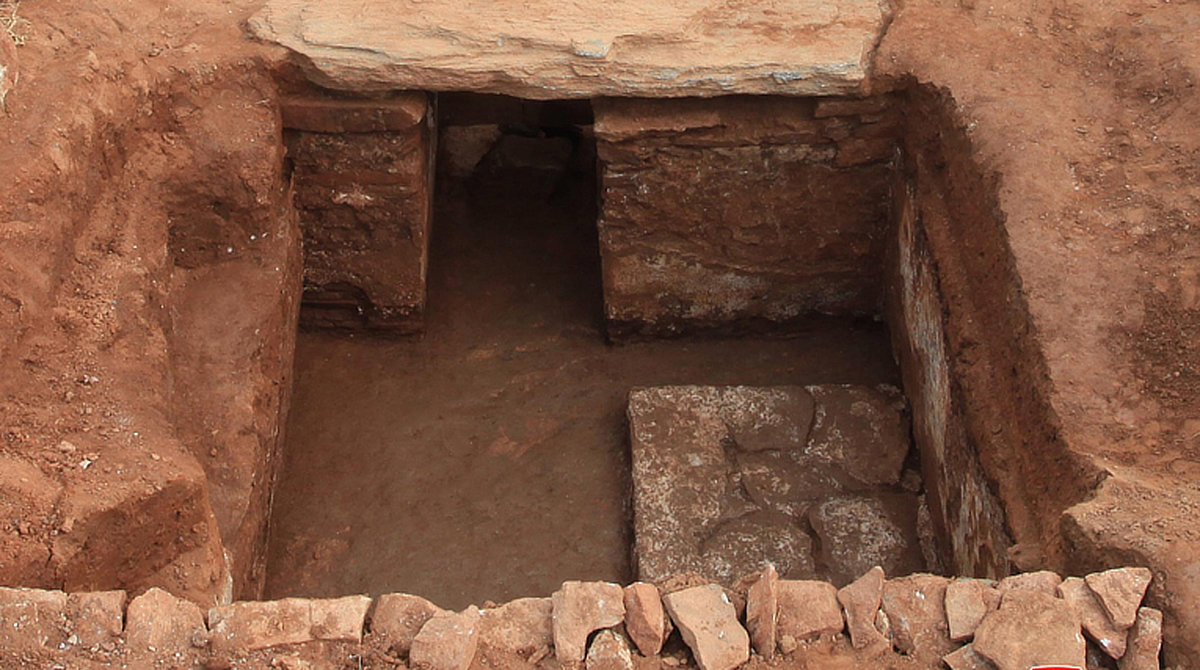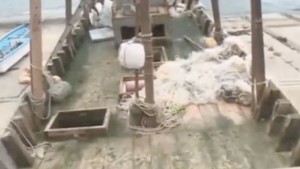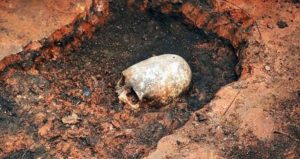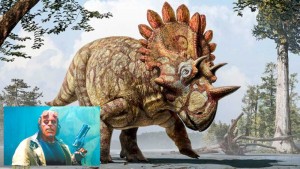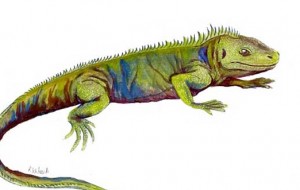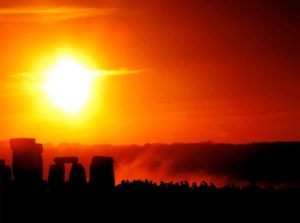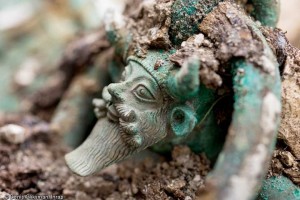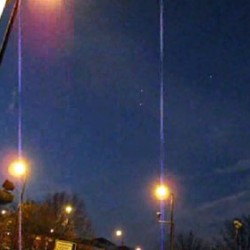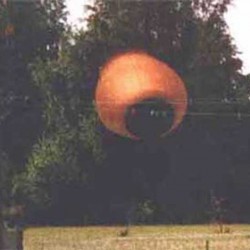Something a little different – a number of stone tombs with painted murals and artefacts have been discovered in the Democratic People’s Republic of Korea (DPRK).
The Archaeology Society of the DPRK have verified that it’s a Koguryo (Goguryeo) mural tomb with pictures of four guardians. The tomb, newly discovered in the Ryonggang area, probably built circa the sixth century. The society also estimated that the tomb is of great academic significance in studying the history and culture of Koguryo and its burial custom in particular.
A research group of the Korea National Heritage Preservation Agency has recently unearthed a new mural tomb dating back to Koguryo Kingdom (277 B.C.-A.D. 668) in the Undok area of Ryonggang County, Nampho City.
The tomb is situated on a hillside north of the area. The Ryonggang Large Tomb and the Twin-pillared Tomb, inscribed on the World Heritage list, are 1.5 kilometres away to the west.
As an earthen tomb with a stone chamber, it consists of a burial chamber and passage.
At the entrance to the passage, there is a two-leaved stone gate made of plain granite with ring-shaped metal knobs. One part of the gate is 125 cm in height, 60 cm in width and 9 cm in thickness, and each knob is 10 cm in diameter.
The passage leans to the east slightly from the centre of the south wall in the plane square chamber, and a low rectangular bier lying to the west is on the floor of the chamber. The south and west walls remain preserved comparatively well, with the length of 3.17 metres and the height of 1.5 metres for each side.
The main theme of murals in the tomb is a picture of four guardians. Depicted on the west wall is a white tiger with its head and its eyes highlighted with red pigment, its lying long body and its tail crooked while leaping.
Also unearthed there were pieces of murals depicting heads and forelegs of such animals as tiger and dog and the haunch of a horse and with vine patterns on the lower part of the ceiling, and one nail used for bier.
The Archaeology Society of the DPRK verified that it is a Koguryo mural tomb with the theme of a picture of four guardians, discovered for the first time in the Ryonggang area, and that it was built circa the sixth century. The society also estimated that the tomb is of great academic significance in studying the history and culture of Koguryo and its burial custom in particular, as it has a stone gate with metal knobs preserved in their original state.
naenara.com.kp
Koguryo Kingdom and Origin
Goguryeo, also called Goryeo was a Korean kingdom located in the northern and central parts of the Korean Peninsula and the southern and central parts of Manchuria. At its peak of power, Goguryeo controlled most of the Korean peninsula, large parts of Manchuria and parts of the Russian Far East and eastern Mongolia.

Along with Baekje and Silla, Goguryeo was one of the Three Kingdoms of Korea. It was an active participant in the power struggle for control of the Korean peninsula and was also associated with the foreign affairs of neighboring polities in China and Japan.
The Samguk sagi, a 12th-century text from Goryeo, indicates that Goguryeo was founded in 37 BC by Jumong, a prince from Buyeo, who was enthroned as Dongmyeong.
Goguryeo was one of the great powers in East Asia, until its defeat by a Silla–Tang alliance in 668 after prolonged and internal strife caused by the death of Yeon Gaesomun. After its fall, its territory was divided among the states of Later Silla and Balhae.
The name Goryeo (alternatively spelled Koryŏ), a shortened form of Goguryeo (Koguryŏ), was adopted as the official name in the 5th century and is the origin of the English name “Korea”.
In the geographic monographs of the Book of Han, the word Goguryeo (hanja: 高句驪) made its first appearance in 113 BC in the name of Gaogouli County under the jurisdiction of Xuantu Commandery. In the Old Book of Tang (945), it is recorded that Emperor Taizong refers to Goguryeo’s history as being some 900 years old. According to the 12th-century Samguk sagi and the 13th-century Samgungnyusa, a prince from the Buyeo kingdom named Jumong fled after a power struggle with other princes of the court and founded Goguryeo in 37 BC in a region called Jolbon Buyeo, usually thought to be located in the middle Yalu and Tongjia River basin, overlapping the current China-North Korea border.

Mythical figure from the Goguryeo-era Ohoe Tomb 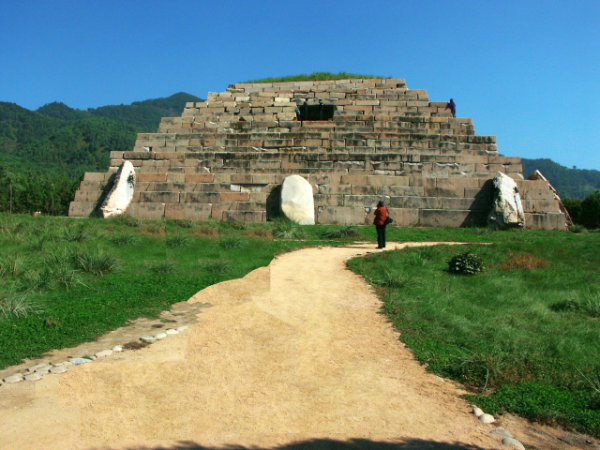
Royal tomb, located in Ji’an, Jilin, Goguryeo Kingdom
In 75 BC, a group of Yemaek who may have originated from Goguryeo made an incursion into China’s Xuantu Commandery west of the Yalu.
However, the weight of textual evidence from the Old Book of Tang, New Book of Tang, the Samguk sagi, the Nihon Shoki as well as other ancient sources would support a 37 BC or “middle” first century BC foundation date for Goguryeo. Archaeological evidence would support centralised groups of Yemaek tribes in the 2nd century BC, but there is no direct evidence that would suggest these Yemaek groups were known as or would identify themselves as Goguryeo. The first mention of Goguryeo as a group label associated with Yemaek tribes is a reference in the Han Shu that discusses a Goguryeo revolt in 12 AD, during which they broke away from the influence of the Chinese at Xuantu.
At its founding, the Goguryeo people are believed to be a blend of people from Buyeo and Yemaek, as leadership from Buyeo may have fled their kingdom and integrated with existing Yemaek chiefdoms. The Records of the Three Kingdoms, in the section titled “Accounts of the Eastern Barbarians“, implied that Buyeo and the Yemaek people were ethnically related and spoke a similar language.
Both Goguryeo and Baekje shared founding myths and originated from Buyeo.
Source: Wikipedia

